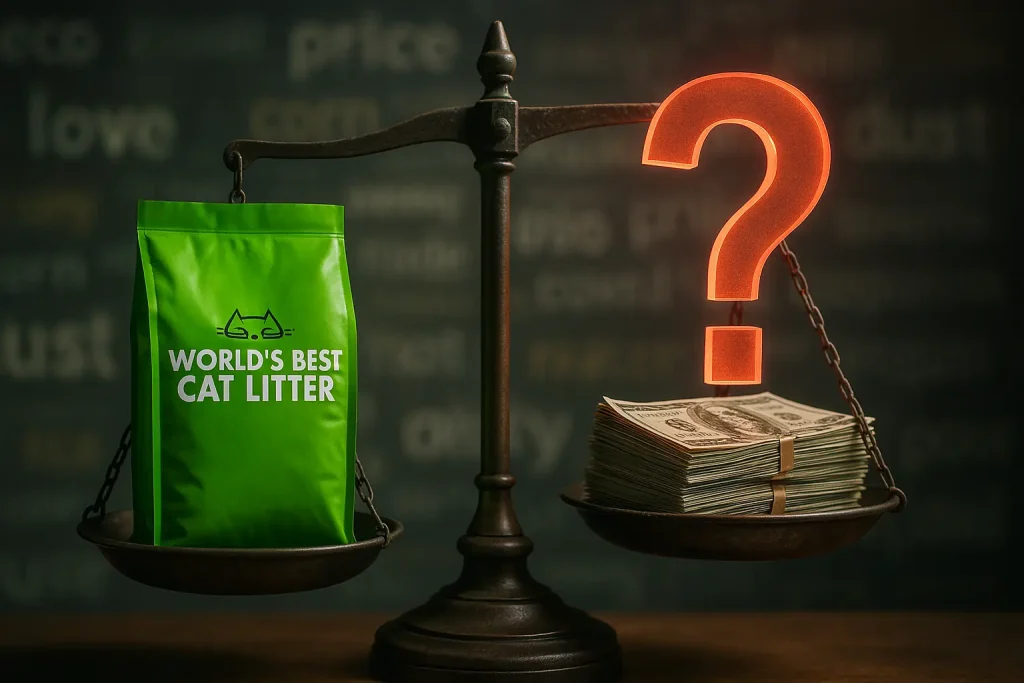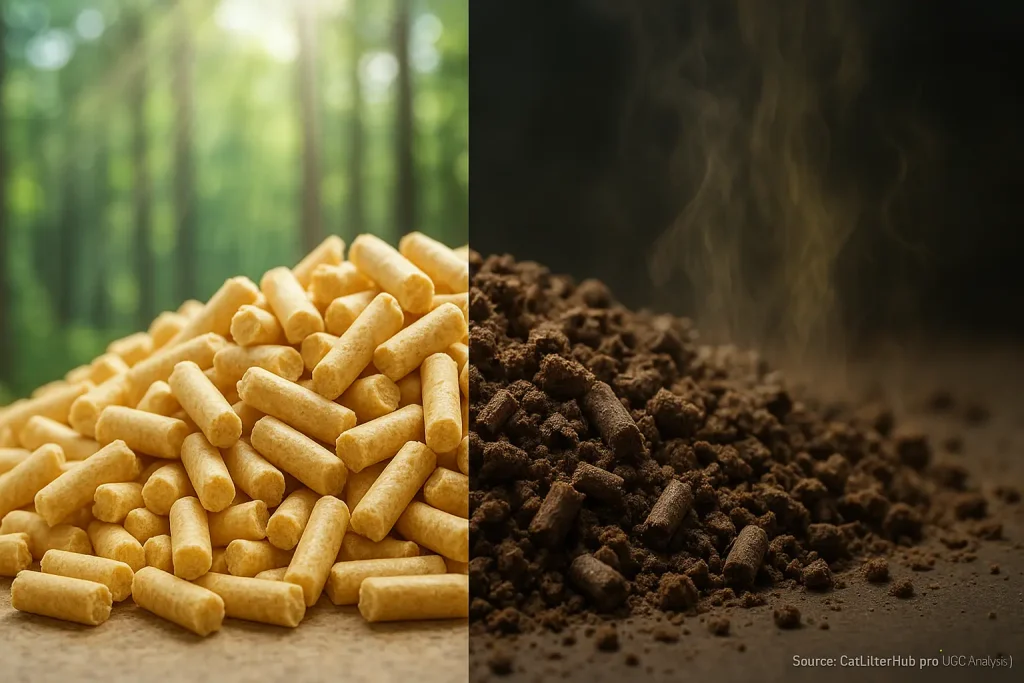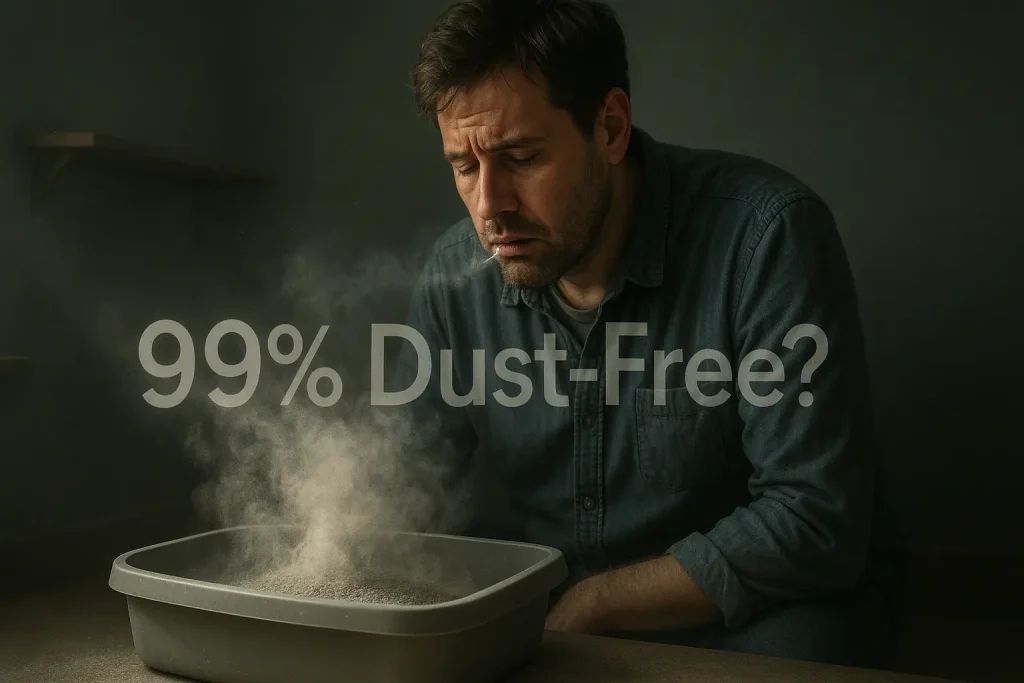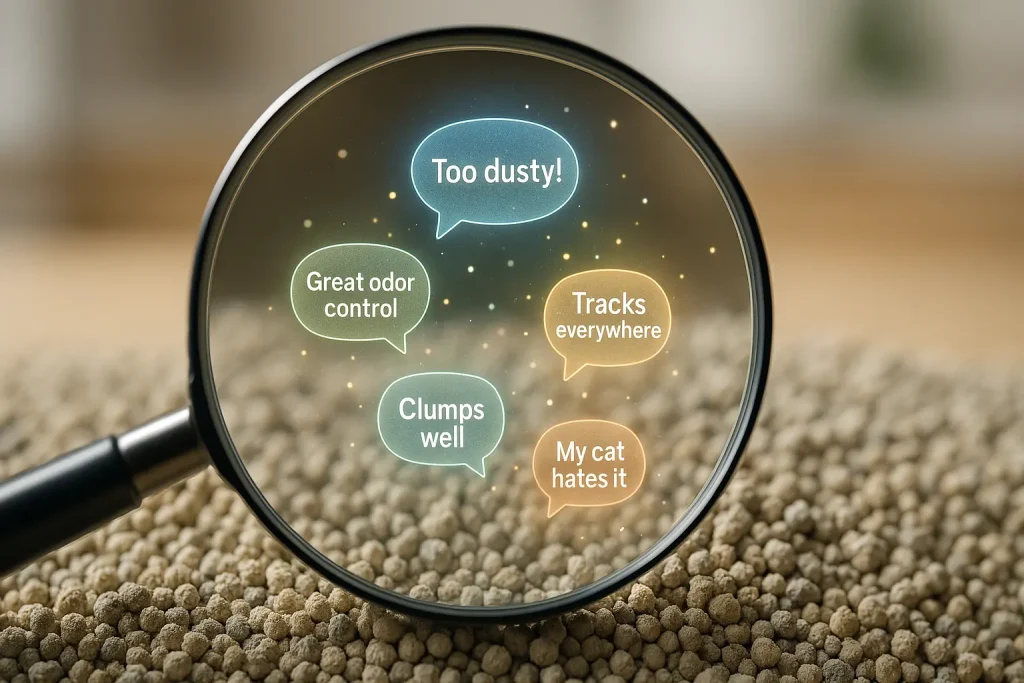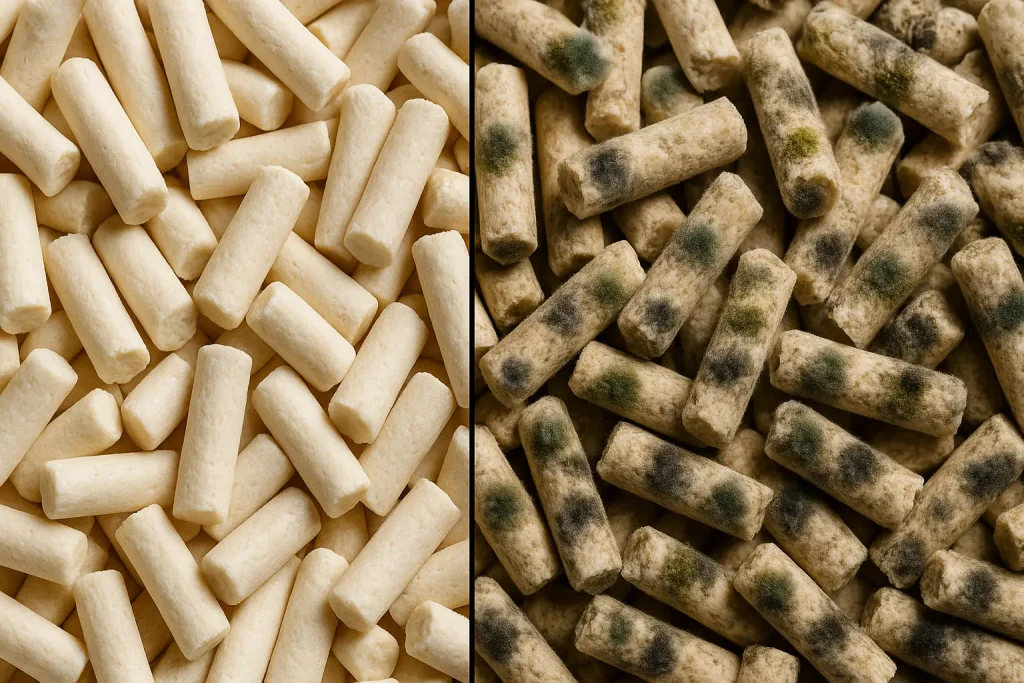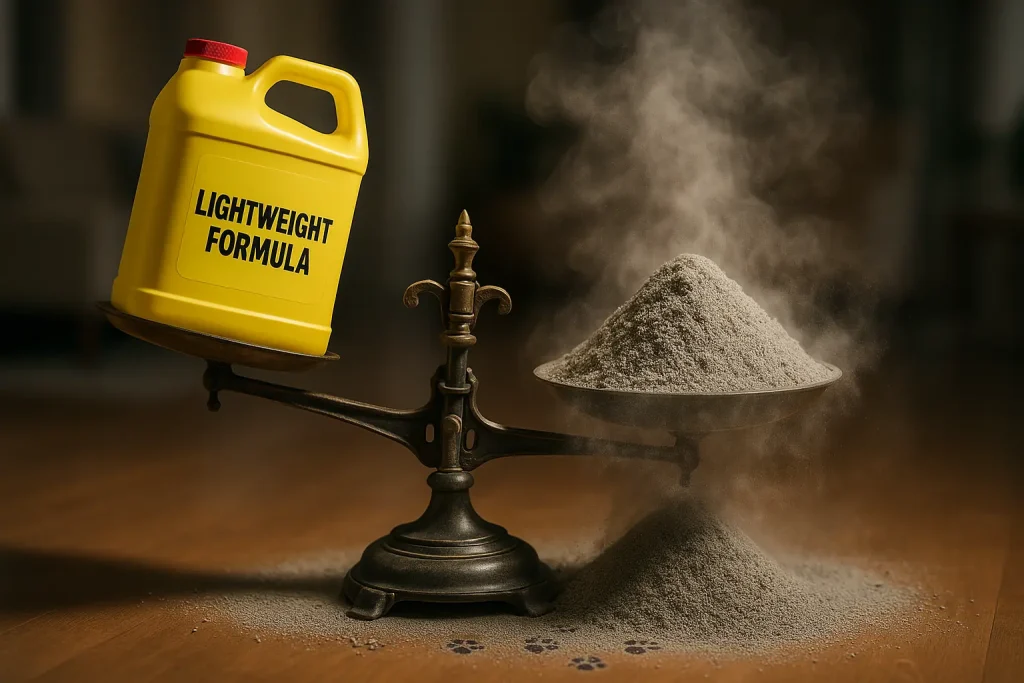The "Eco-Friendly" Illusion: What Users Really Find with Silica Gel Disposal
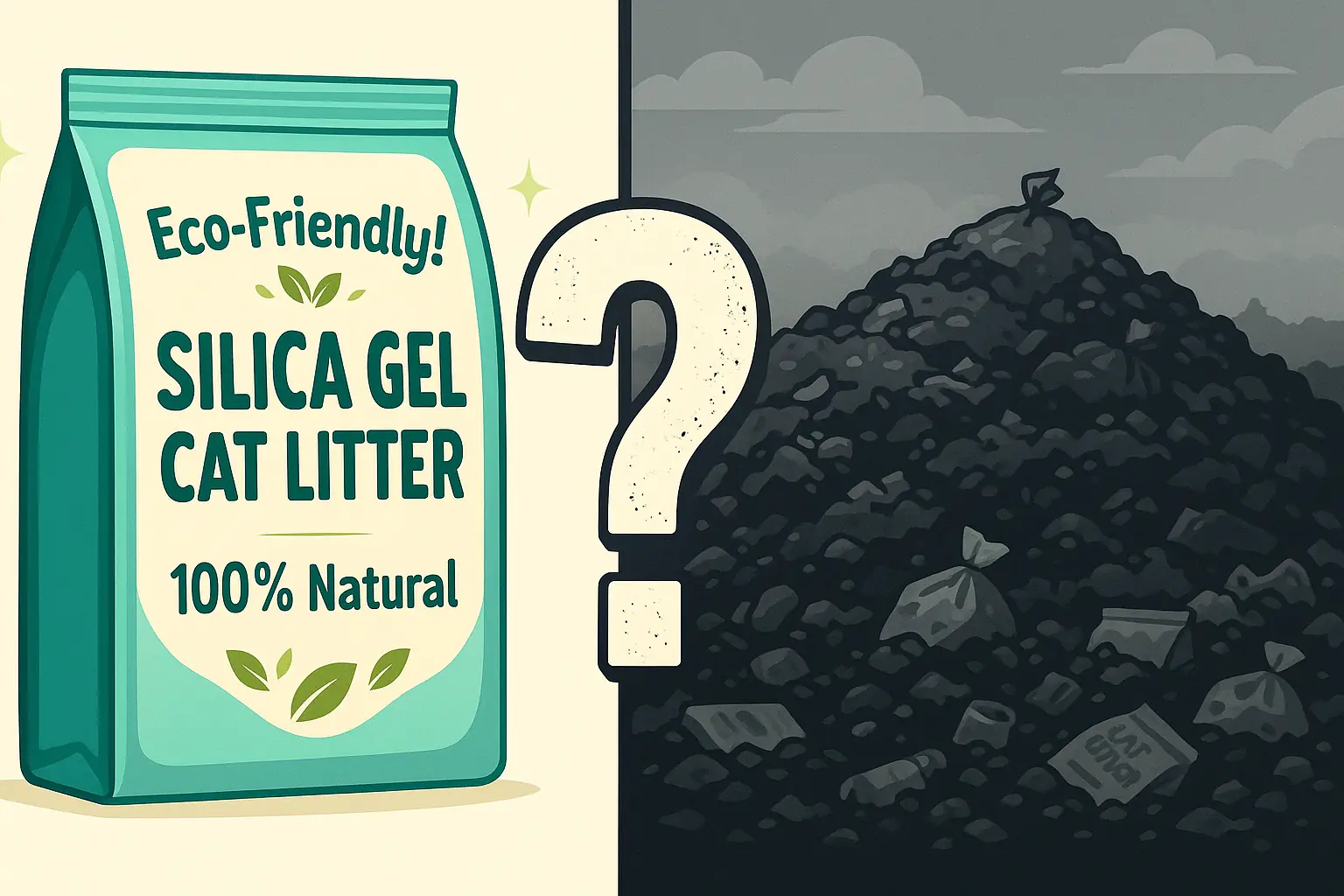
Marketing frequently projects an eco-friendly image for silica gel litter. It promotes the "natural" sand origins. See those shiny crystals? You might think "clean and green." Many owners do. But what happens after the scoop? This page cuts through that greenwashing. We uncover the disposal truth.
User confusion about silica gel disposal is immense. "Is it compostable? Recyclable?" These questions flood online cat communities. Our aggregated data shows countless owners share this uncertainty. Imagine an owner meticulously rinsing those crystals, genuinely hoping for a green disposal method. What do they discover? Many users report only dead ends for disposal. Frustration is a common documented theme.
This Cat Litter Hub investigation reveals silica gel's disposal reality. "Natural origins" can easily mislead consumers. They do not guarantee an earth-friendly end-of-life. Not at all. The collective user experience points to one main destination for used silica: landfills. This page presents these community-sourced facts directly. We empower your fully informed litter choices.
The Landfill Truth: Where Do Those Silica Crystals End Up?
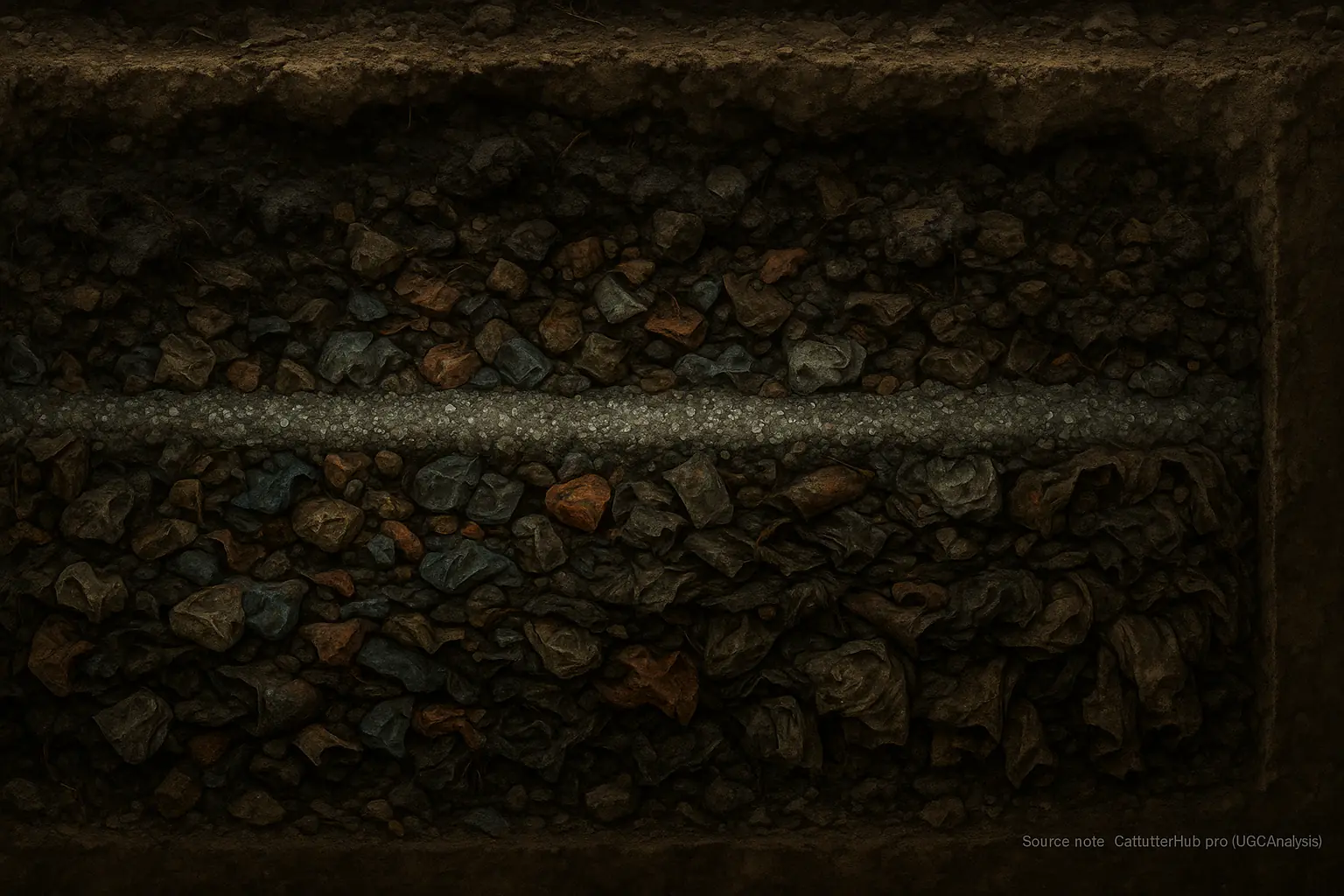
Silica gel litter is primarily silicon dioxide. This compound resembles refined sand or glass. Silicon dioxide resists biodegradation in landfills. "I thought it would just break down like dirt," one user wrote, "but my composter looked like a glitter bomb after six months!" That's because it doesn't. These crystals persist.
Most used silica gel litter reaches landfills. Our analysis of user habits confirms this widespread disposal pattern. This accumulation of non-biodegradable material contributes to growing landfill volume. Imagine every bag of silica litter ever used by every cat owner. That's a mountain range of tiny, immortal crystals piling up, year after year.
Cat Litter Hub's review synthesis shows users find disposal guidance lacking. Cat owners frequently report no clear, eco-friendly disposal options for silica crystals. "The bag says 'natural,' but nothing about disposal," is a common refrain we see. "So, in the trash it goes." The data suggests users commonly resort to binning it.
The Biodegradability Myth & Recycling Pipe Dreams
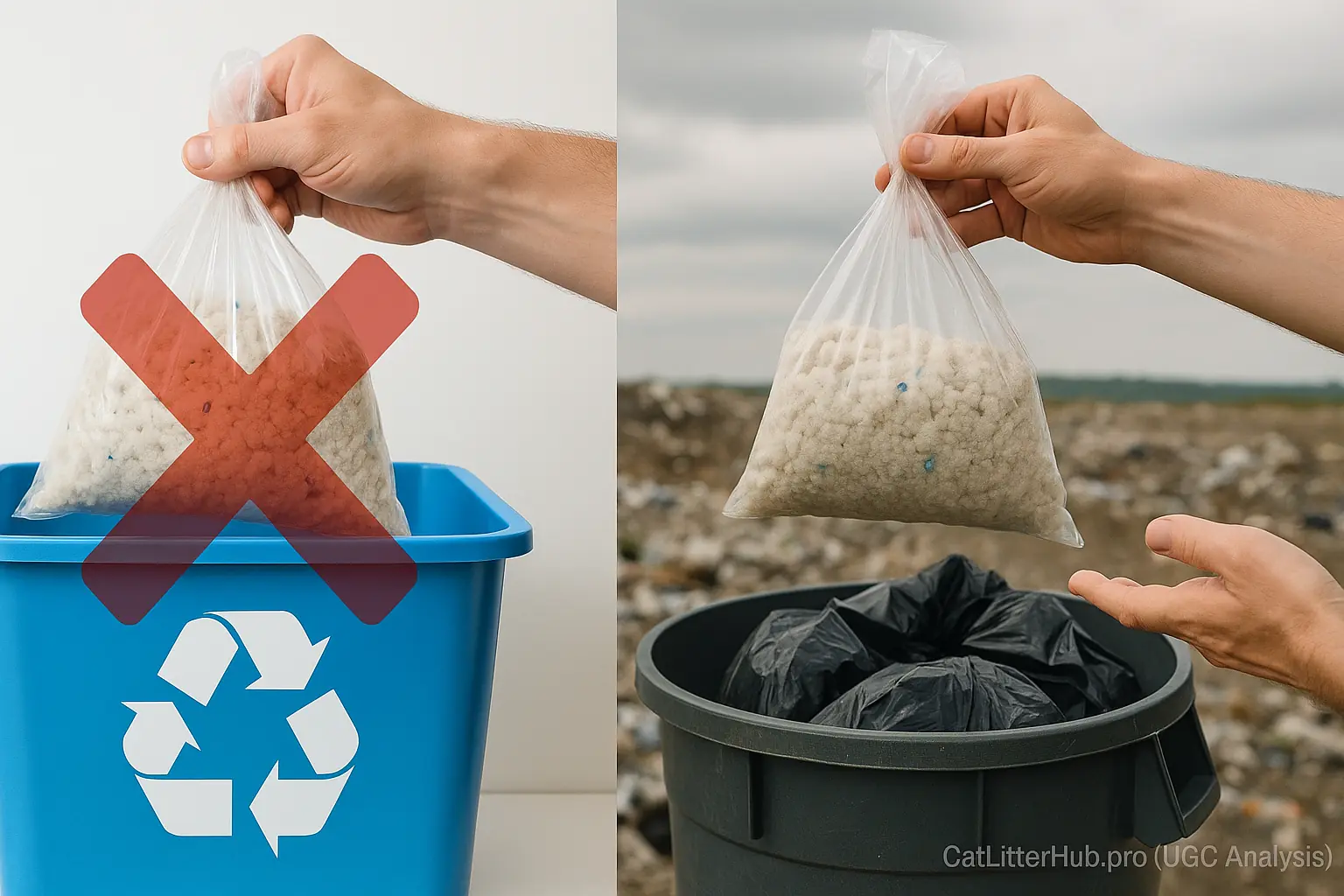
Silica gel litter marketing often hints at eco-friendliness. These claims can seriously mislead cat owners seeking sustainable options. "But the package said 'earth-friendly minerals'!" a user lamented to Cat Litter Hub. Yes, silica is a mineral. So is granite. You wouldn't expect your countertop to biodegrade in a landfill, would you? Used, soiled silica litter faces this same hard reality.
The truth about recycling used silica gel is stark. Our extensive analysis of user experiences reveals no widespread, practical municipal recycling programs for contaminated litter currently exist in the US. Many conscientious owners encounter this frustrating dead end. "I checked with my local recycling facility – they said absolutely not for used cat litter!" is a common story echoing through online cat communities. This recycling pipe dream leaves owners with landfill disposal as the primary option.
What about those "eco" angles manufacturers sometimes promote? These almost exclusively refer to silica gel's extended lifespan within the litter box. Fewer changes mean less total litter consumed over months. This characteristic reduces overall waste volume compared to daily scooping clays. This is a benefit. However, user feedback confirms this advantage does not translate to biodegradable or easily recyclable disposal at the product's end-of-life. That crucial distinction is one many cat parents initially miss.
User Practices & The Search for Truly Greener Litter Alternatives
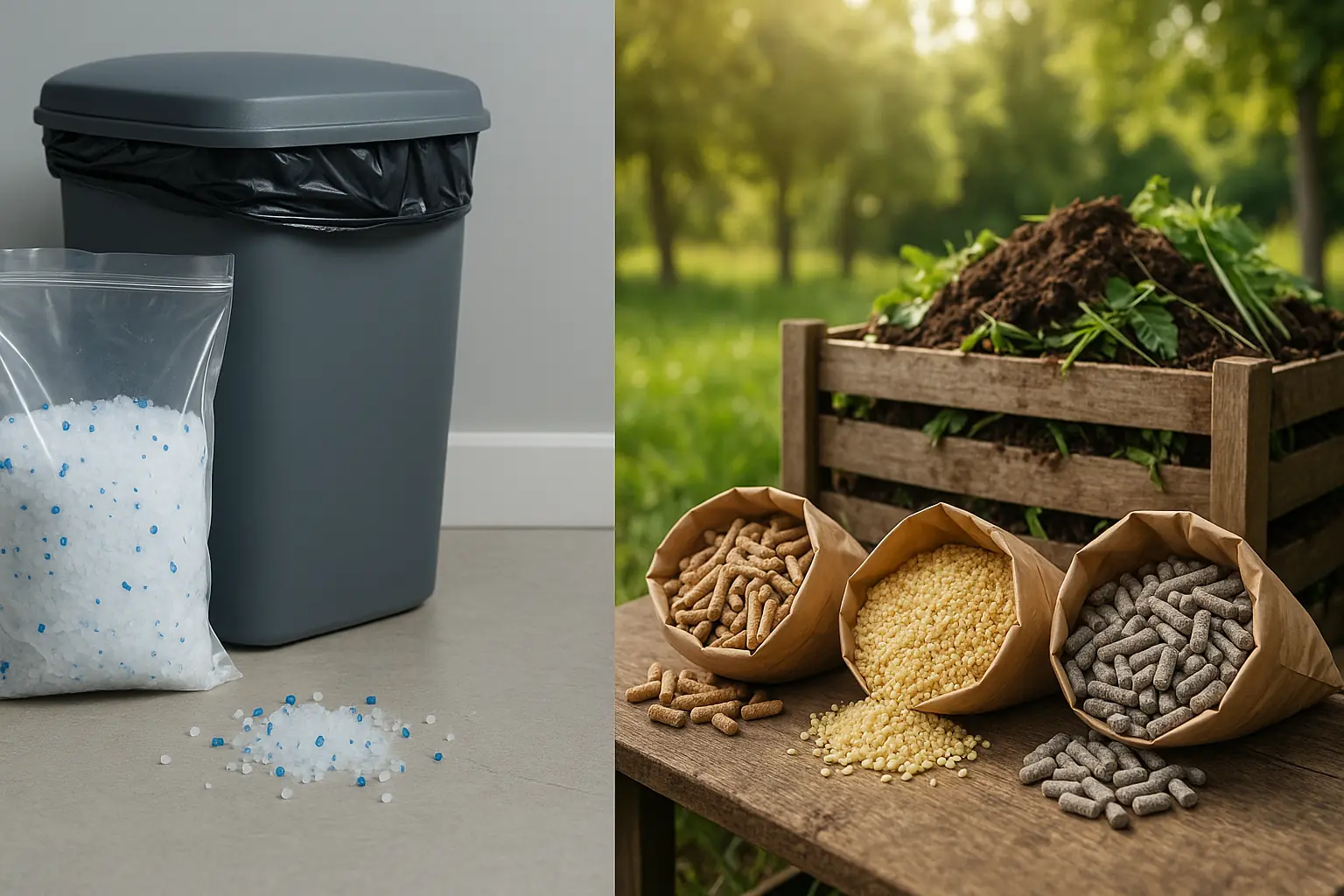
So, what do most folks do with used silica gel litter? Cat Litter Hub's trawl through countless forums and reviews points to one main answer. The general trash can receives it. This litter heads to landfills. For many users, it feels like the only straightforward disposal route available, often with a sense of resignation.
Silica gel litter often performs exceptionally well. Owners praise its odor control. Its low-maintenance appeal is undeniable. This convenience, however, clashes with growing environmental awareness for many users. The collective voice in reviews shows a clear internal conflict. Cat parents weigh these litter benefits against ecological concerns daily; it's a common struggle we see in the data.
For cat owners actively seeking more eco-friendly choices, alternatives do exist. Plant-based cat litters present more sustainable disposal paths. Litters derived from wood, corn, paper, grass, walnut, or even tofu can be explored. Many of these options biodegrade naturally. Some even allow for composting, provided specific conditions are met. These alternatives, of course, come with their own unique performance profiles and user considerations, which Cat Litter Hub continues to analyze.

